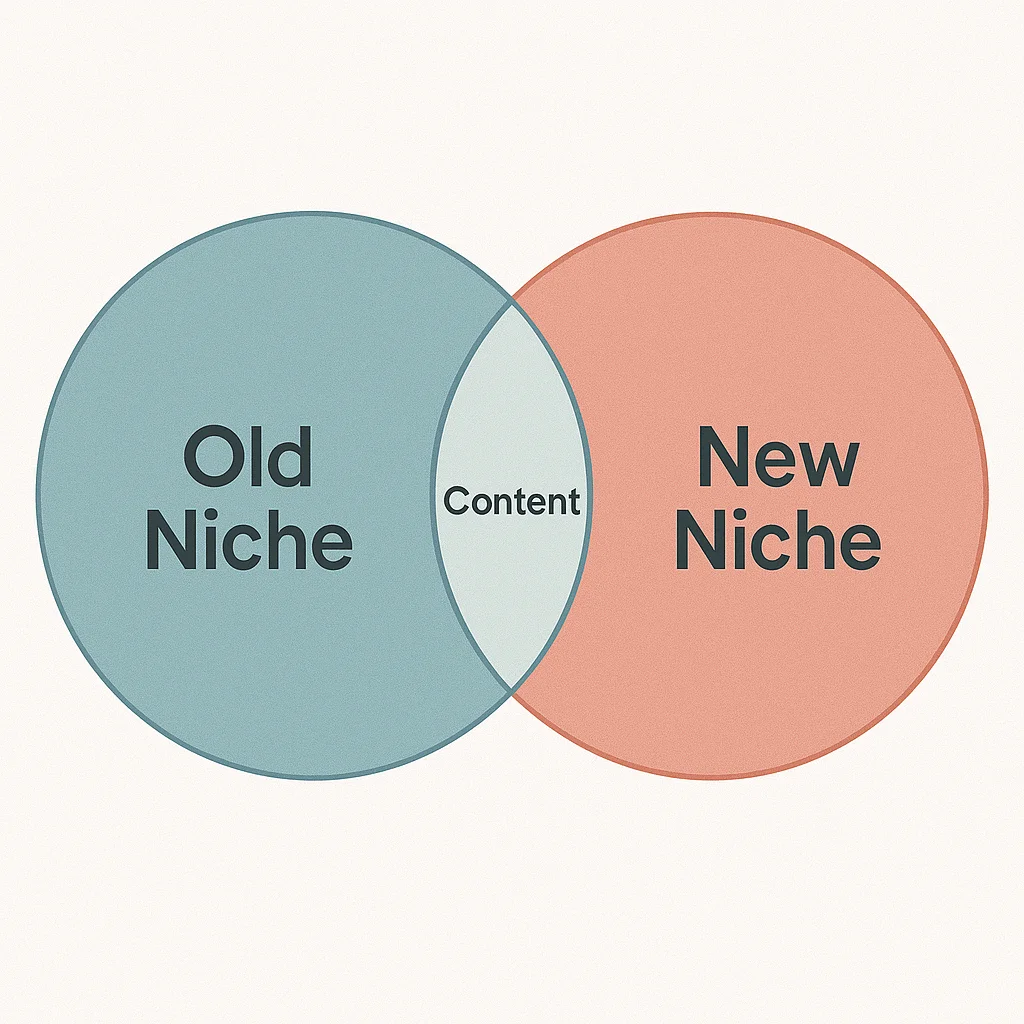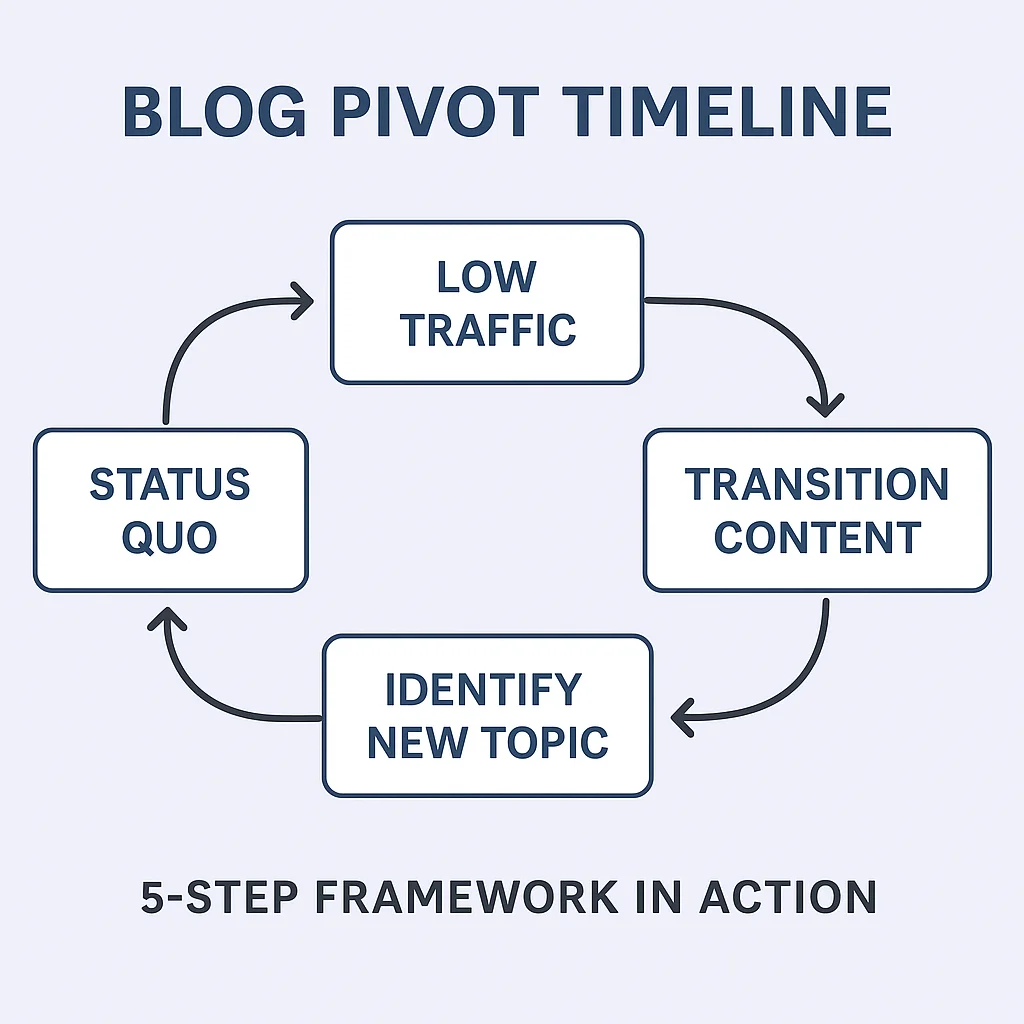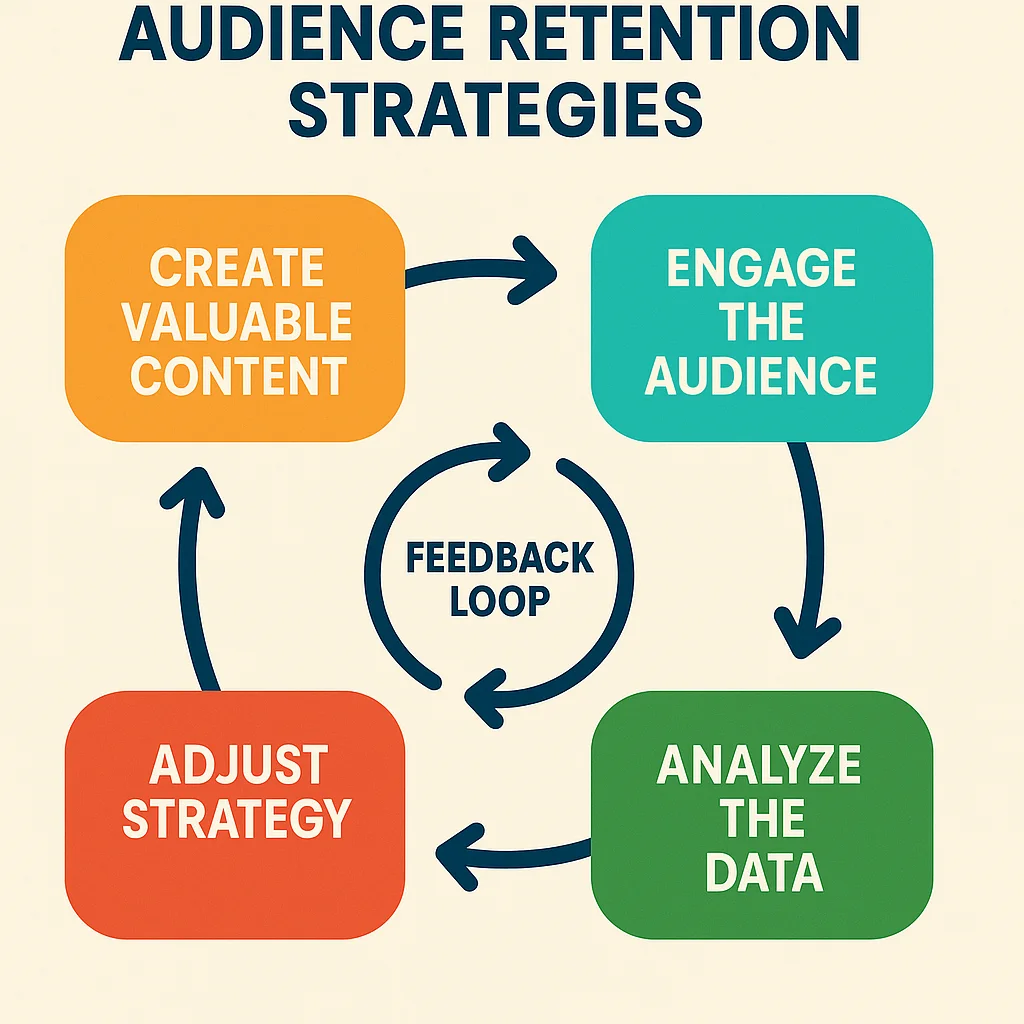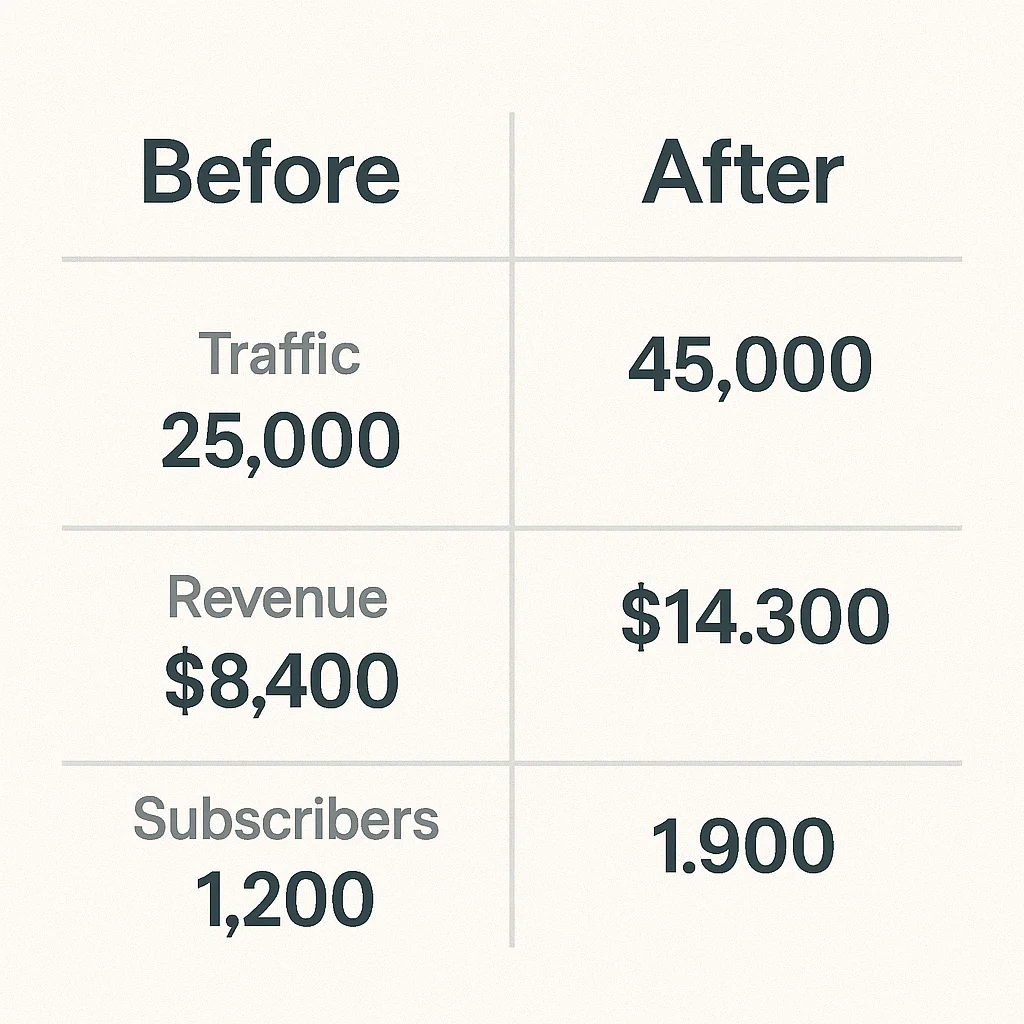Have you ever poured your heart into a blog only to watch it flatline? I certainly have. Six months into my fitness blog, I faced the brutal reality that my content wasn’t resonating despite my best efforts. The engagement was minimal, growth stagnant, and my passion was waning fast.
Pivoting your blog niche can feel like starting from scratch – a terrifying prospect after all that investment. But here’s the truth: a strategic pivot blog niche change doesn’t mean losing everything you’ve built.
In this guide, I’ll walk you through exactly how I successfully pivoted my blog niche while keeping 80% of my audience intact. You’ll learn the warning signs that indicate it’s time for change, how to select your new direction, and the step-by-step framework to transition smoothly without alienating your readers.
Let’s transform your blogging journey from frustration to fulfillment.
Why Bloggers Consider to Pivot Blog Niche
Signs Your Current Blog Niche Isn’t Working
When I first noticed my content wasn’t performing, I tried to ignore the signs. Don’t make the same mistake. Your blog might be ready for a content pivot if you’re experiencing:
- Consistently declining or stagnant traffic despite quality content
- Decreasing engagement (comments, shares, email responses)
- Personal burnout or loss of interest in creating content
- Limited monetization opportunities despite solid traffic
- Oversaturation in your current niche

During my fitness blog days, I found myself procrastinating on content creation – a clear indication something wasn’t right. The passion that initially fueled my writing had disappeared, making each post feel like a chore.
Benefits of a Strategic Pivot
A thoughtful blog transformation isn’t just an escape plan – it’s a growth strategy. When executed properly, pivoting your blog niche can:
- Reignite your passion for content creation
- Open new monetization avenues
- Attract a more engaged audience
- Position you in a less competitive space
- Allow you to leverage existing authority in complementary areas
Common Fears About Changing Direction
The idea of changing your blogging direction often triggers legitimate concerns. I remember lying awake wondering:
“Will my existing readers abandon me?” “What about all that SEO equity I’ve built?” “Am I just giving up too easily?”
These fears are normal, but understanding the pivot process helps overcome them. One of my readers actually emailed me saying, “Your transition made me discover interests I didn’t know I had.” That single message validated my decision.
Planning Your Blog Niche Pivot
Analyzing Your Current Audience’s Interests
Before making any changes, I needed to understand exactly who was reading my content and why they kept coming back. This audience understanding became the foundation of my successful pivot.
Start by:
- Reviewing your most popular content (what resonates?)
- Analyzing comments for recurring themes
- Sending a simple survey asking what other topics interest them
- Checking your email subscriber engagement by topic
When I examined my fitness blog analytics, I discovered my audience wasn’t primarily interested in workout routines as I’d assumed. They were engaging most with my content about sustainable healthy habits and mindset – valuable insight that shaped my pivot direction.
Identifying Profitable Niche Opportunities
A successful pivot balances passion with practicality. Your new niche should excite you AND offer growth potential.
Evaluate potential niches by researching:
- Market demand and competition levels
- Monetization opportunities (products, affiliate programs, sponsorships)
- Content sustainability (can you produce content consistently?)
- Growth trends (is interest increasing or decreasing?)
I used tools like Google Trends, BuzzSumo, and Reddit to identify rising topics related to my existing content. This research revealed a growing interest in holistic wellness with fewer established authorities than the fitness space.
Finding the Content Overlap Between Niches
The bridge between your old and new niche is critical for a smooth transition. I created a simple Venn diagram mapping topics that could serve both my fitness audience and my planned wellness focus.

This overlap became my content bridge – topics that resonated with my existing audience while introducing elements of my new direction. For me, stress management techniques complemented both fitness goals and wellness practices, making it a perfect transitional topic.
[Case study opportunity: How lifestyle blogger Emma Johnson successfully pivoted from fashion to sustainable living by focusing first on sustainable fashion]
The 5-Step Blog Pivot Framework
Step 1: Research and Select Your New Direction
Your new blog direction shouldn’t be chosen on a whim. I spent nearly a month validating my pivot by:
- Testing content topics on smaller platforms (like Medium)
- Joining communities in my potential new niche
- Interviewing potential audience members
- Analyzing successful blogs in the space
This research confirmed there was indeed an audience hungry for approachable wellness content without the perfectionism often found in the space.
Step 2: Create Your Transition Timeline
Rushing a blog rebrand is a recipe for disaster. I created a 90-day transition plan that included:
- Weeks 1-2: Introducing occasional content with elements of the new niche
- Weeks 3-6: Increasing frequency of transition content while maintaining some original content
- Weeks 7-10: Openly announcing the pivot with detailed reasoning
- Weeks 11-12: Full implementation of new content strategy with references to past content
Your timeline might differ based on posting frequency and audience size, but gradual implementation is crucial.
Step 3: Develop Bridge Content Between Niches
Bridge content was my secret weapon for a successful pivot. These posts naturally connected my fitness focus with my new wellness direction.
Examples from my transition included:
- “How Mental Wellbeing Impacts Your Fitness Goals”
- “Beyond Exercise: Other Lifestyle Factors Affecting Your Health”
- “Mindfulness Techniques for Better Workout Recovery”
Each piece intentionally satisfied my existing audience while introducing concepts central to my new direction.
Step 4: Communicate Changes to Your Audience
Transparency builds trust during a content realignment. I chose to directly address the changes with my audience through:
- An honest blog post explaining my reasons
- An email to subscribers detailing what would change (and what wouldn’t)
- Updates to my about page and site header
The response shocked me – instead of the backlash I feared, readers appreciated my honesty. One commented: “I’ve been feeling the same shift in my own life. Can’t wait to see where you go with this.”
Step 5: Gradually Introduce New Content
With the groundwork laid, I began producing content fully aligned with my new niche. However, I was careful to:
- Reference relevant past content when appropriate
- Maintain consistent publishing schedules
- Keep my voice and writing style consistent
- Respond thoughtfully to all feedback
This gradual approach allowed my audience to evolve with me rather than feeling abandoned.

How to Retain Your Audience During a Niche Change
Transparency Strategies That Build Trust
When pivoting your blog niche, honesty isn’t just ethical – it’s strategic. I found these transparency approaches particularly effective:
- Explain your “why” in depth (passion, sustainability, expertise)
- Share both successes and struggles during the transition
- Acknowledge the support that got you to this point
- Demonstrate how the new direction benefits readers
I created a dedicated “Our Evolution” page that chronicled the journey, including screenshots of old designs and content. This became surprisingly popular, with readers appreciating the behind-the-scenes look.
Content Approaches That Keep Readers Engaged
Your content strategy during a blog repositioning requires extra attention. I focused on:
- Creating exceptional, high-value content in the new niche
- Maintaining a consistent voice and writing style
- Referencing and linking to relevant past content
- Using familiar formats readers already enjoyed
I also made sure every piece answered the question: “Why should my existing readers care about this topic?” This reader-first approach maintained engagement through the transition.
Using Audience Feedback to Guide Your Transition
During my pivot, audience feedback became my north star. I actively solicited input through:
- Comment section questions
- Email surveys with incentives
- Social media polls
- One-on-one conversations with loyal readers
When several readers expressed confusion about how certain new topics connected to their interests, I created a series addressing those specific concerns – turning potential drop-off points into stronger connections.

Rebranding Your Blog for the New Niche
Visual Elements to Consider Changing
Your visual identity may need updates to reflect your pivot. I evaluated:
- Logo and color scheme relevance
- Header images and site photography
- Typography and design elements
- Site organization and navigation
Rather than a complete overhaul, I opted for an evolution – keeping my signature colors but updating imagery and typography to reflect the broader wellness focus. This visual continuity helped maintain recognition while signaling change.
Messaging and Voice Adjustments
Your blog’s voice is its personality. During my blog transformation, I:
- Updated my tagline and mission statement
- Revised my about page and bio
- Adjusted category descriptions
- Modified my email welcome sequence
The key was evolution, not revolution. My conversational style remained, but I expanded my vocabulary to include wellness terminology while keeping it accessible to my fitness audience.
Technical SEO Considerations During a Pivot
Protecting your SEO during a niche change is crucial. I worked with an SEO specialist to:
- Conduct content audits identifying what to keep, update, or redirect
- Create a redirect strategy for eliminated content
- Update internal linking structures
- Revise meta descriptions and titles for key pages
- Adjust schema markup where appropriate
This technical foundation preserved most of my search traffic through the transition, giving the new content time to gain traction.
Common Pitfalls to Avoid When Pivoting Your Blog Niche
Moving Too Quickly
My research on failed blog pivots revealed a common theme: impatience. Successful transitions require time for:
- Audience adjustment and acceptance
- Search engines to recategorize your site
- New content to gain traction
- Your own expertise to develop fully
I initially wanted to complete my pivot in 30 days but extended to 90 after reading about others’ experiences. This patience preserved relationships with readers who needed time to adjust.
Ignoring Audience Signals
During any content transition, your audience will give feedback – sometimes subtle, sometimes direct. Warning signs to watch for include:
- Sudden drops in engagement on new content
- Unsubscribe spikes after certain topics
- Confused or negative comments
- Declining open rates on emails
When I noticed lower engagement on a particular wellness subtopic, I surveyed readers to understand why. Their feedback revealed I was using industry jargon they didn’t connect with – an easy fix that prevented alienation.
Abandoning Successful Content Elements
Not everything needs to change during a pivot. I maintained:
- My storytelling approach that readers loved
- Popular content formats (my “Quick Guide” series)
- Regular features like monthly Q&As
- My approachable, occasionally humorous tone
These familiar elements provided continuity while I introduced new topics and perspectives.
According to a study of 400 blogs that attempted pivots, those that maintained at least 30% of their core content elements retained 72% more of their audience
Measuring Success After Your Blog Transition
Key Metrics to Track
How do you know if your pivot is working? I focused on these indicators:
- Engagement rates compared to pre-pivot content
- Subscriber retention and growth
- Time on page for new content
- Social sharing patterns
- Conversion rates for new offers
I created a simple dashboard tracking these metrics weekly, looking for trends rather than immediate results. The data showed an initial dip followed by steady growth exceeding my previous niche.
Timeline Expectations for Results
Patience is essential when evaluating your pivot. My metrics followed this pattern:
- 1-2 months: Engagement fluctuations as audience adjusts
- 3-4 months: Stabilization of core metrics
- 5-6 months: Growth begins exceeding pre-pivot levels
- 6-12 months: New audience acquisition accelerates
Setting realistic expectations prevented me from abandoning the pivot too soon when early metrics were volatile.
When to Adjust Your Pivot Strategy
No pivot plan survives contact with reality unchanged. Be prepared to make adjustments when:
- Certain topics consistently underperform
- Audience feedback highlights confusion
- Monetization opportunities don’t materialize
- Your own enthusiasm wanes for aspects of the new direction
I found my initial wellness focus too broad and narrowed to “practical wellness for busy professionals” after three months – a refinement that immediately improved engagement.

Conclusion
Pivoting your blog niche is both an art and a science. I’ve walked you through how I successfully transitioned my content direction while preserving my audience and search visibility. The key elements – thorough research, strategic planning, transparent communication, and gradual implementation – formed the foundation of my successful pivot.
Remember that your blog isn’t static – it’s an evolving entity that grows with you. A thoughtful pivot isn’t admitting failure; it’s strategically aligning your content with your expertise, passion, and market opportunity.
If you’re standing at the crossroads of continuing a niche that no longer serves you or pivoting to something more aligned, I hope this guide gives you the confidence to make that transition successfully. Your audience is more loyal to your authentic voice than your specific topic – trust in that connection as you evolve.
Have you successfully pivoted your blog or are you considering a change? I’d love to hear about your experience in the comments.

